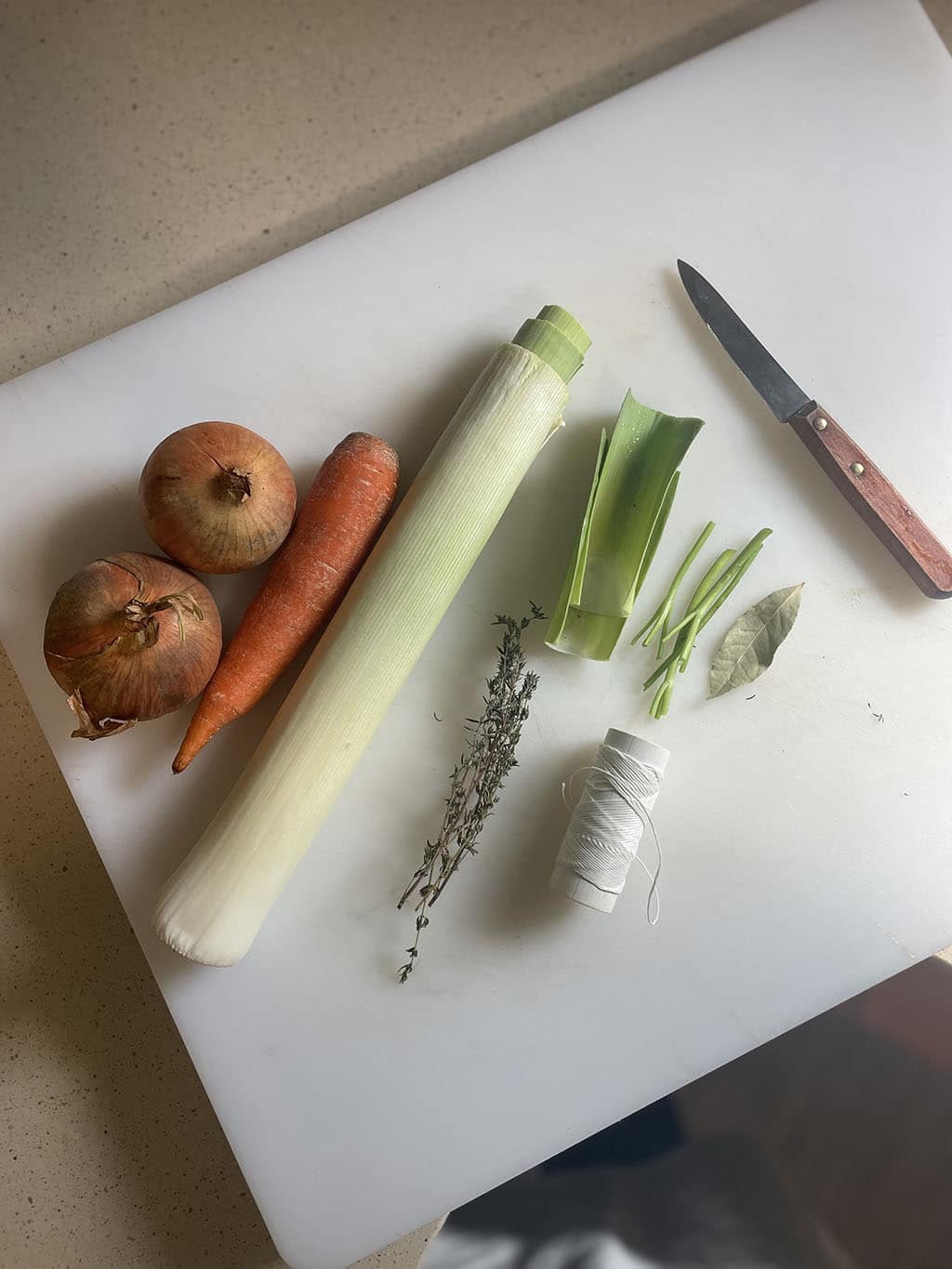Equally to physicists who search for the origins of the universe, cooks of all ages are on the hunt for flavour. In this regard, much evidence points to the stock.
Stocks are flavourful liquids that serve as foundations for other preparations like soups, sauces, and stews. There are meat, poultry, fish, game, seafood or vegetable stocks that are usually derived by simmering the ingredients in water, together with aromatics and herbs.
Aromatics can vary depending on the stock (as well as personal preference), but the usual suspects are onions, leeks, celery, carrots and garlic. Fennel is often added to the fish and seafood kind. Tomatoes are applied to impart colour, acidity as well as to keep the liquid clear.
In addition to aromatics, the flavour of the stock is developed further with the help of herbs and spices. For example, bay leaves, parsley stems, thyme, and peppercorns are the most commonly used inclusions.
Sometimes, they are arranged into bouquet garni (bay leaf, parsley stems, thyme wrapped into green part of leeks and tied with a string) or sachet d’épices (ingredients together in a tea bag), which allows for their easy removal once the flavour has dissipated.
To differentiate between stocks, there is a minefield of mostly French terminology that points out subtleties of technique and flavour. The term fond in French (meaning ‘base’) is closest to the English ‘stock’ and implies that this liquid serves as a base for other preparations.
Furthermore, fond also signifies that the liquid was prepared with bones, whilst jus (akin to ‘broth’ in English) suggests that the liquid was made of meats.
Then, there is bouillon that comes from the word bouillir, meaning ‘to boil’. It conveys the fact that something was boiled in water and is often used to denote that either stock or broth have been reduced.
Fumet is a liquid that more commonly contains wine, and nage, meaning ‘to swim’, refers to a bouillon that is used to cook and serve ingredients at the same time.
Then, there is a distinction between white (uncoloured components) and brown (roasted components) stocks. Browning the meats is the ultimate flavour-maker for the protein-based stocks, however, browning also works well on vegetables as it amplifies the depth and richness of the flavour.
Last but not least is dashi, a Japanese term standing for a light stock, made with boiled water infused with dried seaweed (kombu), dried bonito fish flakes (katsuobushi), or mushrooms (shiitakes).
Whist the language of what-is-what in the stock world is rather confusing, the actual preparation of the stock is rather straightforward. The general rule is that once all the ingredients are collected, they are simmered slowly to transfer the flavours from the ingredients into the water. There are a few handy rules for achieving outstanding results.
- Always pour cold water over cooked ingredients as it helps to keep the stock clear.
- Avoid adding salt as the liquid is often further reduced or combined to create other preparations.
- Use as little fat as possible, as it makes the stock cloudy.
- Skim, skim and skim impurities and fats.
- Cut the bones to medium size to maximise the flavour by increasing the contact area of meats with the water (so ultimately more flavour is extracted).
- For brown stocks, increase browning and caramelisation to elevate the flavour.
- Use a variety of aromatics that are most commonly diced to medium mirepoix.
- Use a variety of herbs and spices that are often arranged into bouquet garni or a sachet.
- Use a tall pot to prevent too much evaporation.
- Concentrate the stock further by boiling it after straining.
Investing time in preparing stocks does not only signify the pursuit of flavour. It manifests a desire and ability to use all ingredients and ultimately symbolises commitment to good food.
Click here for more information: https://www.theculinarypro.com/stocks-soups-and-sauces-1
By Dr. Irina Mikhailava
|| features@algarveresident.com
Dr. Irina Mikhailava, a chef and a good food champion, happily residing in the Algarve and eating all over the world with an appetite for learning, sharing and writing. Instagram: incompanyoffood




















